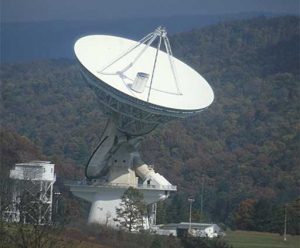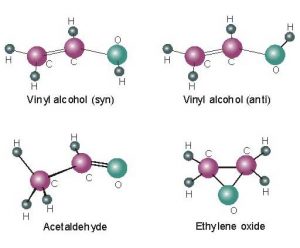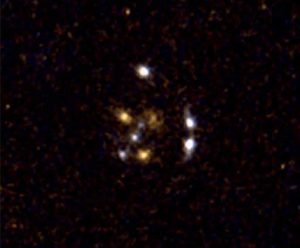Ethylene glycol, the chemical commonly used as automobile antifreeze, was discovered recently in a massive interstellar cloud of dust and gas near the center of the Milky Way Galaxy. Scientists used the National Science Foundation’s (NSF) 12 Meter Radio Telescope to detect this organic molecule.
Helium-3 Traces Matter in the Milky Way
Astronomers using the National Science Foundation’s 140 Foot Radio Telescope in Green Bank, West Virginia, were able to infer the amount of matter created by the Big Bang.
Radio Emission Found from Rapidly Rotating Dust Grains
Astronomers have made the first tentative observations of the faint, tell-tale signals of what appear to be dust grains spinning billions of times each second.
Scientists Toast the Discovery of Vinyl Alcohol in Space
Astronomers using the National Science Foundation’s 12 Meter Telescope at Kitt Peak, AZ, have discovered the complex organic molecule vinyl alcohol in an interstellar cloud of dust and gas near the center of the Milky Way Galaxy.
First Six-image Gravitational Lens Discovered
An international team of astronomers has discovered the first gravitational lens in which the single image of a very distant galaxy has been split into six different images.
Scientists Discover Sugar in Space
The prospects for life in the Universe just got sweeter, with the first discovery of a simple sugar molecule in space.











